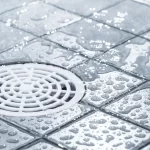Basement flooding is a common issue that can have severe consequences for your home’s foundation. Whether caused by heavy rainfall, burst pipes, or poor drainage, flooding can lead to significant structural damage. In this guide, we will explore how basement flooding affects your home’s foundation, the signs of damage, and preventative measures to protect your property.
The Impact of Basement Flooding on Your Foundation
Flooding can damage your foundation in several ways, compromising the structural integrity of your home. Here are the primary ways basement flooding affects your foundation:
1. Hydrostatic Pressure
When water accumulates around your foundation, it creates hydrostatic pressure. This pressure can push against the foundation walls, causing them to crack or bow. Over time, this can lead to significant structural issues.
2. Soil Erosion
Flooding can cause soil erosion around your foundation. As water moves through the soil, it can wash away the supporting soil, leading to foundation settlement and sinking. This can create uneven floors and cracks in the walls and foundation.
3. Water Seepage
Water can seep through small cracks and pores in the foundation, leading to moisture buildup inside your basement. This can cause mold growth, wood rot, and further weakening of the foundation.
4. Expansive Soil
Certain types of soil, such as clay, expand when they absorb water. This expansion can exert pressure on the foundation, causing it to crack and shift. When the soil dries out, it contracts, leading to further movement and damage.
Signs of Foundation Damage from Basement Flooding
Identifying foundation damage early can help you address issues before they become severe. Here are some common signs of foundation damage caused by basement flooding:
1. Cracks in Walls and Floors
Look for new or widening cracks in your basement walls and floors. Vertical, horizontal, or stair-step cracks can all indicate foundation movement.
2. Uneven Floors
If your floors are uneven or sloping, it could be a sign that your foundation is settling or shifting due to soil erosion or hydrostatic pressure.
. Sticking Doors and Windows
Doors and windows that are difficult to open or close, or have gaps around them, can indicate foundation movement.
. Water Stains and Mold
Water stains on walls or floors and the presence of mold or mildew can indicate water seepage through the foundation.
5. Gaps Between Walls and Floors
Gaps between the walls and floors or between the ceiling and walls can be a sign of foundation settlement.
Preventative Measures to Protect Your Foundation
Taking preventative measures can help protect your foundation from the damaging effects of basement flooding. Here are some effective strategies:
1. Proper Drainage
Ensure that your property has proper drainage to direct water away from the foundation. This includes maintaining gutters and downspouts, installing downspout extensions, and grading the landscape to slope away from the house.
2. Sump Pump Installation
A sump pump can help remove excess water from your basement, preventing water buildup and reducing hydrostatic pressure. Consider installing a sump pump with a battery backup to ensure it functions during power outages.
3. Waterproofing
Waterproofing your basement walls and floors can help prevent water seepage. This can include applying waterproof coatings, installing vapor barriers, and sealing cracks with epoxy or hydraulic cement.
4. Regular Inspections
Regularly inspect your foundation for signs of damage and address any issues promptly. This can include checking for cracks, monitoring for water stains, and ensuring that drainage systems are functioning correctly.
5. Root Barriers
If you have trees near your home, consider installing root barriers to prevent tree roots from invading and damaging your foundation.
When to Call a Professional
While some preventative measures and minor repairs can be handled by homeowners, there are times when it’s best to call a professional:
1. Significant Cracks
If you notice large or widening cracks in your foundation, it’s essential to have a professional assess the damage and recommend appropriate repairs.
2. Persistent Water Issues
If you have ongoing water issues in your basement despite taking preventative measures, a professional can help identify the source of the problem and recommend solutions.
3. Structural Concerns
If you notice signs of significant structural damage, such as bowing walls or severe foundation settlement, it’s crucial to seek professional assistance to prevent further damage.
Conclusion
Basement flooding can have serious consequences for your home’s foundation, leading to structural damage and costly repairs. By understanding the impact of flooding, recognizing the signs of foundation damage, and taking preventative measures, you can protect your home and maintain its structural integrity. Regular inspections and timely repairs are key to preventing major issues and ensuring the longevity of your foundation.
If you’re experiencing basement flooding or suspect foundation damage, don’t hesitate to contact Absolute Draining & Plumbing. Our experienced team is here to help you with all your plumbing and foundation repair needs. Contact us today to schedule a consultation and protect your home from the damaging effects of basement flooding.
Additional Resources
For more information on preventing basement flooding and protecting your foundation, check out these helpful resources:






